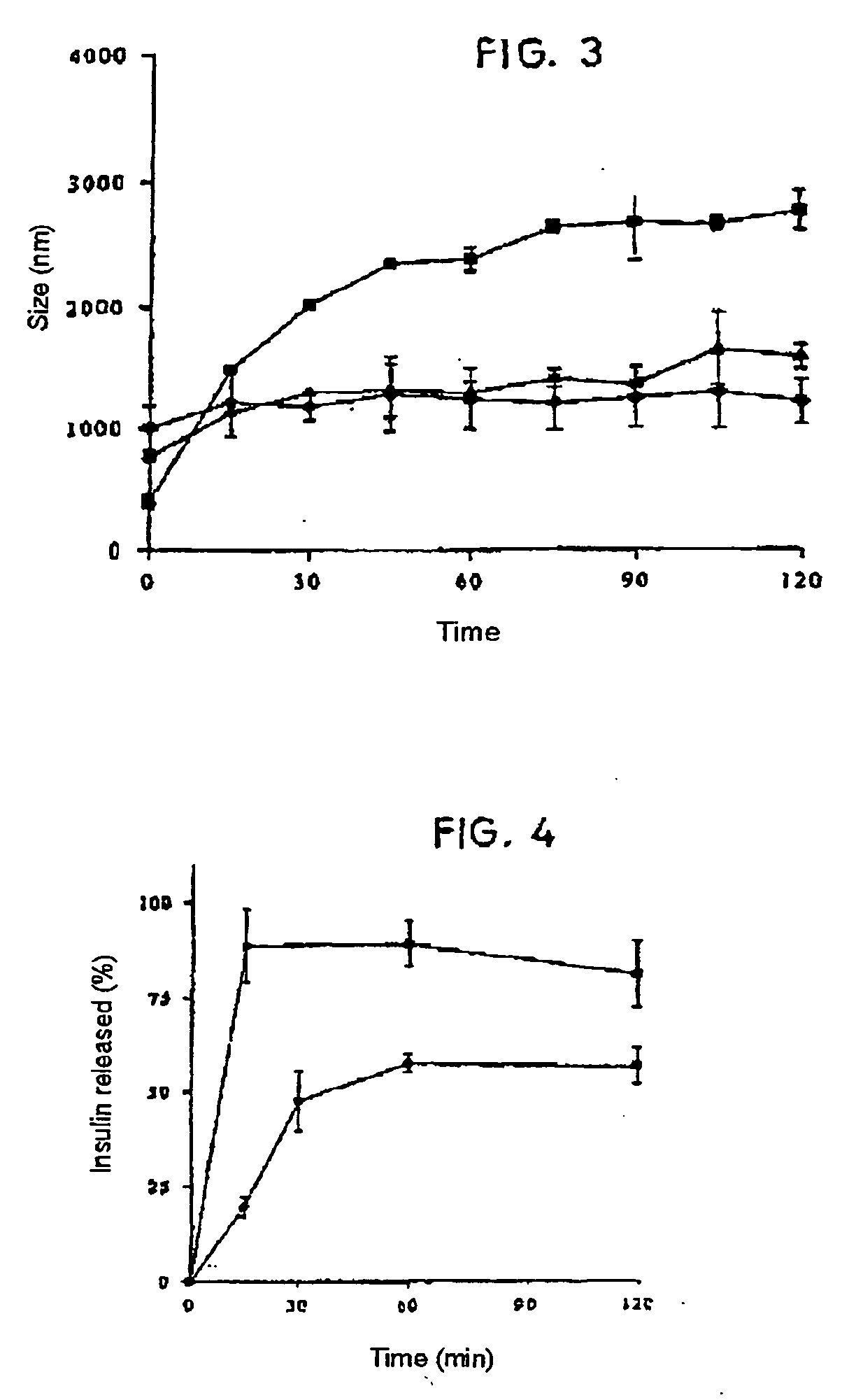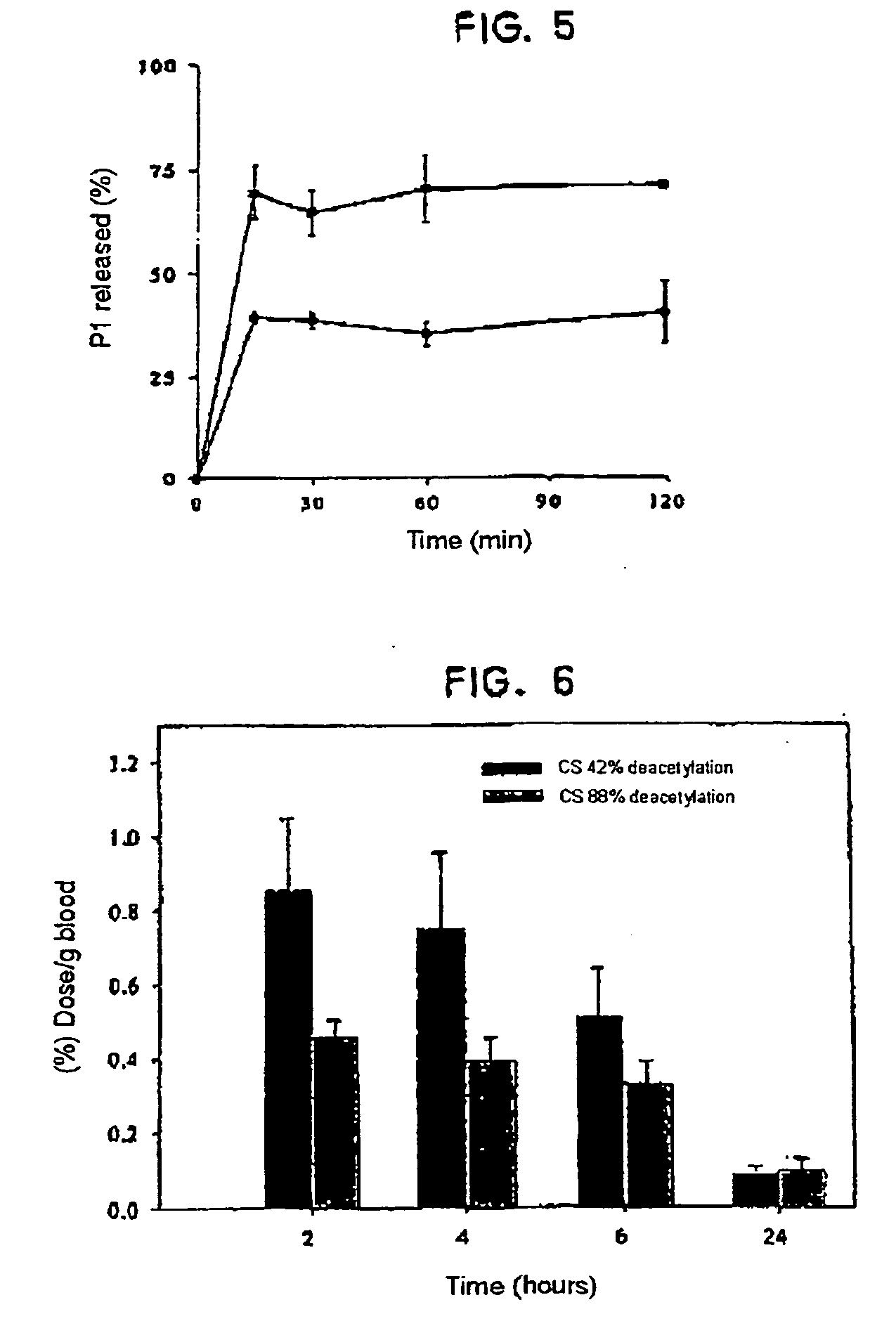Nanoparticles for the administration of active ingredients, method of producing said particles and composition containing same
a technology of nanoparticles and active ingredients, which is applied in the field of nanoparticles, can solve the problems of difficulty in administration of chitosan, difficulty in mucosal administration, and inability to stabilize at given ph values
- Summary
- Abstract
- Description
- Claims
- Application Information
AI Technical Summary
Benefits of technology
Problems solved by technology
Method used
Image
Examples
example 1
[0039] Chitosan (with an 88% deacetylation degree), glucomannan and sodium tripolyphosphate nanoparticles were prepared according to the method of the invention, with different glucomannan ratios. Once they were prepared, their mean diameter and zeta potential were measured.
TABLE 1CS / TPP / GMMean diameterZeta potential(w / w)(nm)(mV)6 / 1 / 2.3250 ± 24+32.2 ± 2.06 / 1 / 4.6302 ± 26+15.2 ± 1.7
example 2
[0040] Chitosan (with an 88% deacetylation degree) and glucomannan nanoparticles were prepared according to the method of the invention, with different glucomannan ratios and without adding any anionic salt. Once they were prepared, their mean diameter and Z potential were measured.
TABLE 2CS / GMMean diameterZeta potential(w / w)(nm)(mV)6 / 4.6252.1 ± 15+31.25 ± 1.066 / 13.8185.5 ± 3 +33.2 ± 0.8
example 3
[0041] Chitosan (with an 88% deacetylation degree) and glucomannan nanoparticles were prepared, incorporating sodium tripolyphosphate, according to the method of the invention, with different chitosan and glucomannan ratios, incorporating the P1 protein or insulin. Once they were prepared, their mean diameter and zeta potential were measured.
TABLE 3CS / TPP / GMAssociatedCS / proteinMean diameterZeta potential(w / w / w)protein(w / w)(nm)(mV)4 / 1 / 1.5P11.6 / 1552 ± 4+32.1 ± 1 6 / 1 / 4.6P11.3 / 1296 ± 6+15.9 ± 0.26 / 1 / 4.6P12.2 / 1263 ± 6+30.3 ± 0.66 / 0.7 / 4.6Insulin2 / 1265.8 ± 6 +32.2 ± 0.4
PUM
| Property | Measurement | Unit |
|---|---|---|
| mean diameter | aaaaa | aaaaa |
| concentration | aaaaa | aaaaa |
| concentration | aaaaa | aaaaa |
Abstract
Description
Claims
Application Information
 Login to View More
Login to View More - R&D
- Intellectual Property
- Life Sciences
- Materials
- Tech Scout
- Unparalleled Data Quality
- Higher Quality Content
- 60% Fewer Hallucinations
Browse by: Latest US Patents, China's latest patents, Technical Efficacy Thesaurus, Application Domain, Technology Topic, Popular Technical Reports.
© 2025 PatSnap. All rights reserved.Legal|Privacy policy|Modern Slavery Act Transparency Statement|Sitemap|About US| Contact US: help@patsnap.com



